Intimate Worlds of Film: Matthieu Orléan on Scrapbooking
Tracing its roots to Anglo-Saxon practices, scrapbooking as a vernacular form of documenting the ephemeral provides a glimpse into the inner worlds of its creators. Highlighting this form in the lives and works of filmmakers and artists, curator Matthieu Orléan presents Scrapbooks: Inside the Imagination of Filmmakers at the 2023 edition of Les Rencontres d’Arles. Featuring the filmic scrapbooks of Agnès Varda, Chris Marker, Jim Jarmusch and Pedro Costa among others, the exhibition offers a behind-the-scenes look into the minds of these filmmakers as well as trivia for cinephiles. In this edited excerpt of his conversation, Orléan speaks about the exhibition as the culmination of a curatorial grant from Arles, his vision and the hybrid form of the scrapbook.
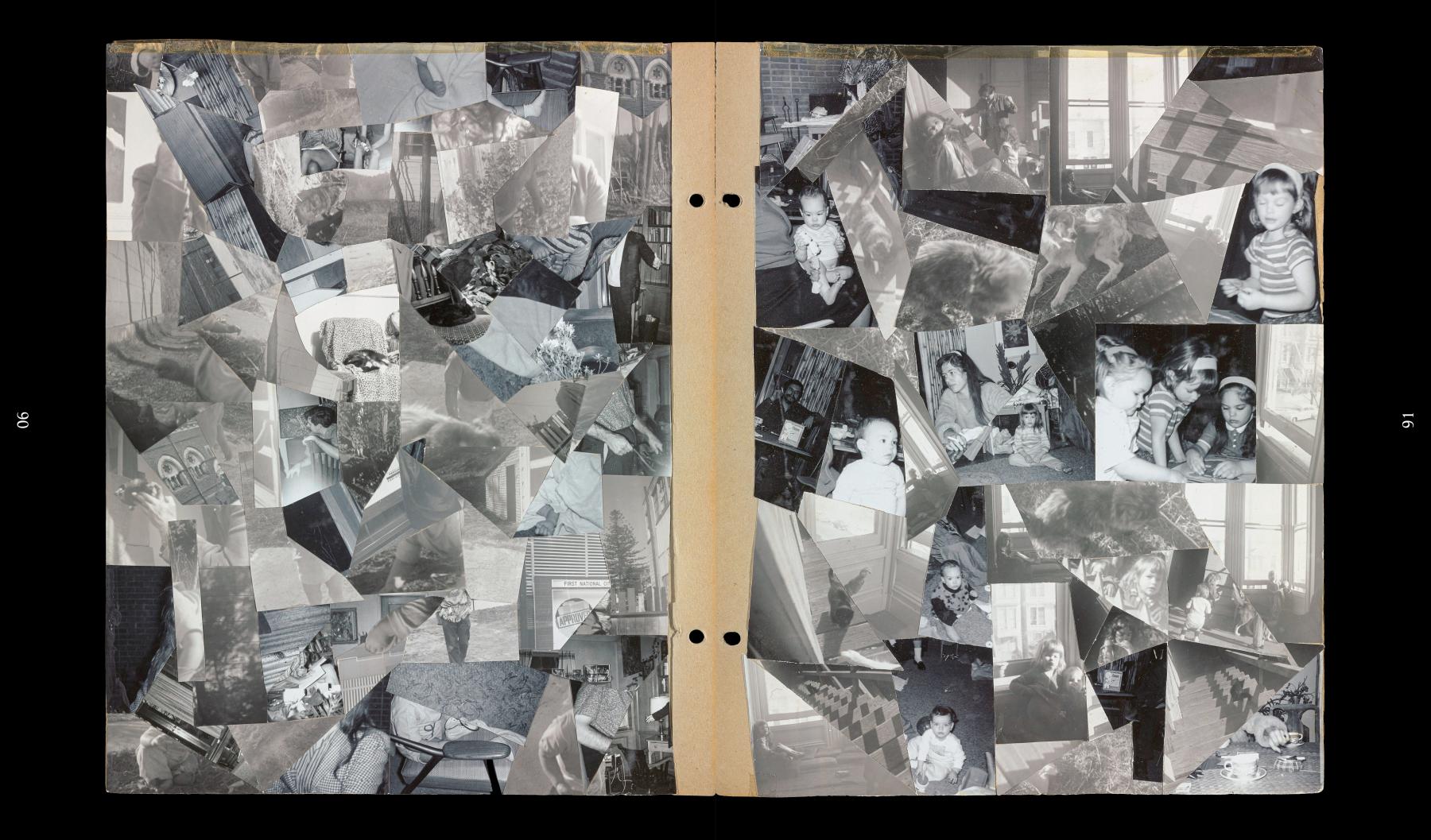
From the Scrapbook of Jane Wodening and Stan Brakhage.
Mallika Visvanathan (MV): What drew you to the scrapbook as a material and archival object?
Matthieu Orléan (MO): I am the Curator at La Cinémathèque Française, where I have been organising exhibitions for the past nineteen years. Over this period, I have visited various archives and I became interested in scrapbooking. I saw that a lot of film directors created image diaries where they used photographs as well as text in very poetic ways. I had this intuition that scrapbooks could be very interesting and that artists and film directors coming from diverse horizons would have distinct perspectives. Even if there are slight differences between one director and another, they have similar patterns in their ways of working. There are no rules for scrapbooking, so artists can do what they want. Some may make one scrapbook all their lives, while others use it to mark very special moments in their lives. Sometimes they made scrapbooks to give to others, so each case is very different.
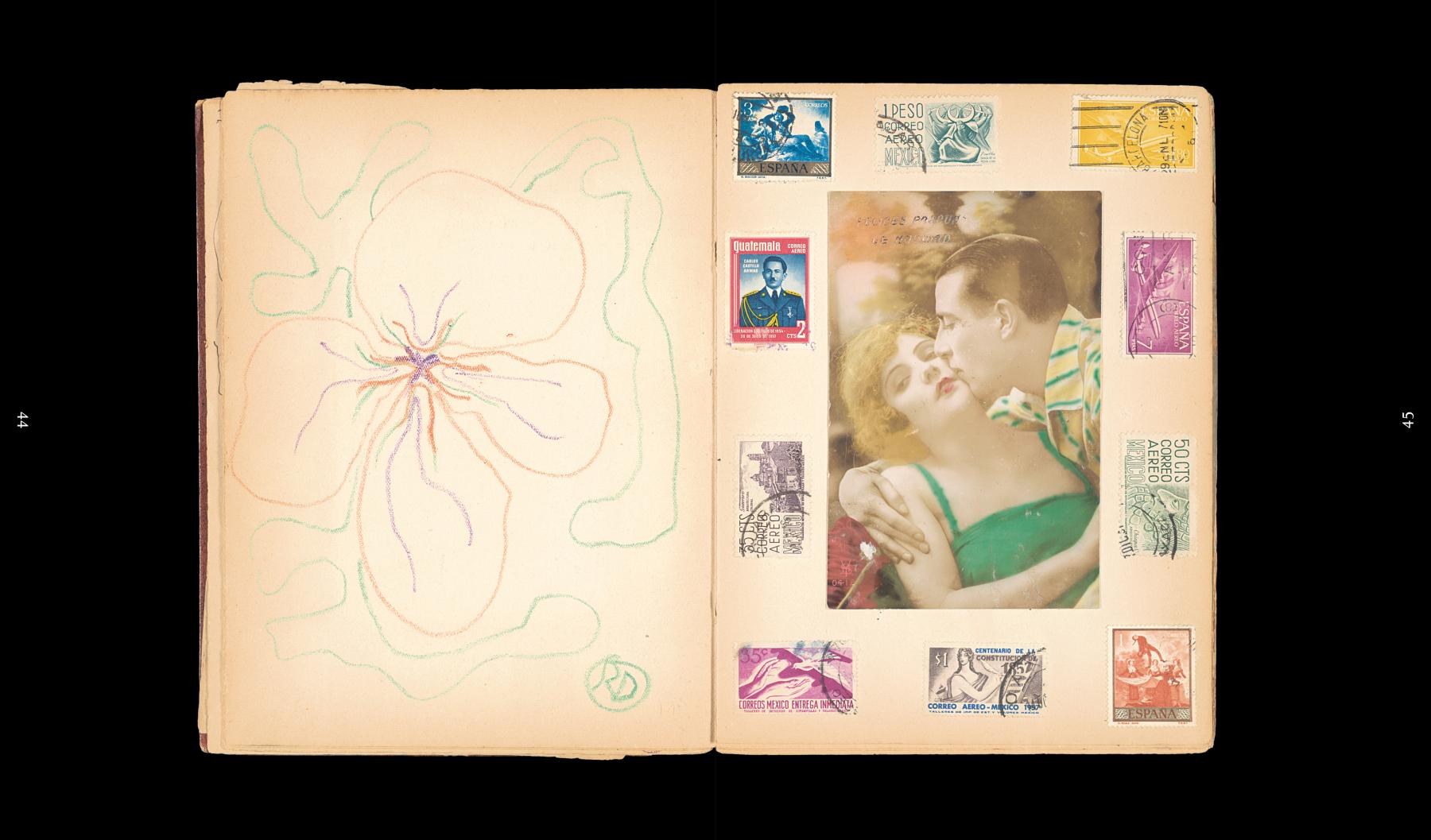
From the Scrapbook of Robert Duncan and Jess.
MV: Can you please tell us a bit about your process and how this project materialised?
MO: I received a curatorial fellowship supported by Les Rencontres d’Arles in 2021. However, because of the Covid-19 pandemic, the process took a lot of time. Scrapbooking was prominent mostly in English and American cultures, and not many scrapbooks were available in French or Latin/Romance languages. This does not mean that only American and English artists were using this method, but they form a predominant part of my project.
I am particularly interested in scrapbooks that appeared after the spread of photography related to cinema and a cinematographic imaginary. I only had a year for research and due to technical issues—such as not having the budget to ship objects from all over the world—I decided to concentrate on artists from England, France, Portugal, USA, etc. I am sure if one went to parts of Asia, one would find such forms or similar uses. I was interested in Japanese artists, but I could not go there because the borders were closed and it was too expensive to ship. So I concentrated on fifteen artists. I have tried to show diversity among the artists. I met people and visited archives as well as institutions and museums in these countries, which is how my research began.
MV: How does this research translate into the form of an exhibition? You also have an accompanying catalogue book. Can you tell us about how you present and negotiate with each—the scrapbook, the film, the exhibition and the book?
MO: In a way, the catalogue was the easiest. I worked with the French publisher Delpire because I wanted the book to be like a scrapbook made from fifteen different scrapbooks in order to focus on the form. The book offers a reproduction of ten double-pages from the main scrapbooks being shown at the exhibition. I have written an accompanying text that focuses on each of the artists, explaining their practice.
The exhibition was a bit more complicated. First, there is the scrapbook, but you cannot touch it. Even if you show the original scrapbooks, they are like relics in glass boxes. We needed a replica to show the inside because the beauty of the form is in the movement of pages, turning from one idea to the next and how they speak to each other.
All of the artists and scrapbooks are connected to cinema in one way or another. We also included some films that are connected to the practice of scrapbooking, including those by Derek Jarman and Bertrand Mandico. We also have William S. Burroughs’ scrapbook, and while he was not a film director, he wrote the scenarios of various short films made by others, including Gus Van Sant.
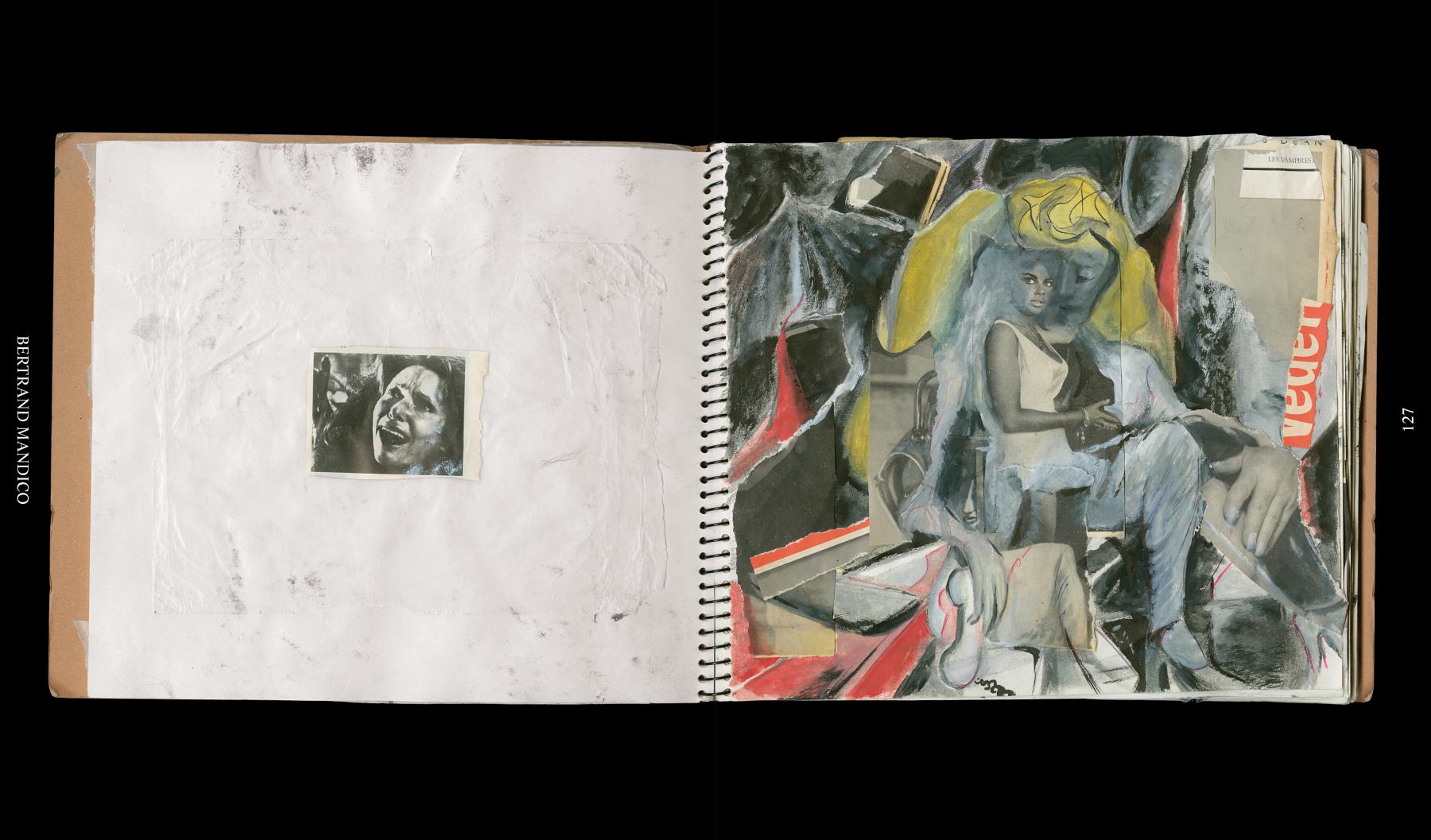
From the Scrapbook of Betrand Mandico.
The exhibition is divided into four parts, with three thematic parts. The first is about scrapbooking and history as it explores the question of the imaginary museum. The second explores scrapbooking and intimacy. The third theme is about catastrophe, politics and crime. The fourth part is dedicated to the artist Christian Patterson. Although he is not a film director, he is obsessed with cinema. His work created a centrepiece for the show, giving the impression of a three-dimensional scrapbook displayed on the walls. This particular work is based on an incident from the 1950s in which a young American couple committed crimes and were eventually arrested. The man was found guilty and executed, but the woman is still alive. This story was adapted for cinema by Terrence Malick in his debut film Badlands (1973). Patterson’s work is a mix of archives from Badlands, documentation of the places where the crimes occurred, rare documents from the 1950s and the photographs that he took when he revisited these places. All of these are placed together at the same level, and the show ends there.
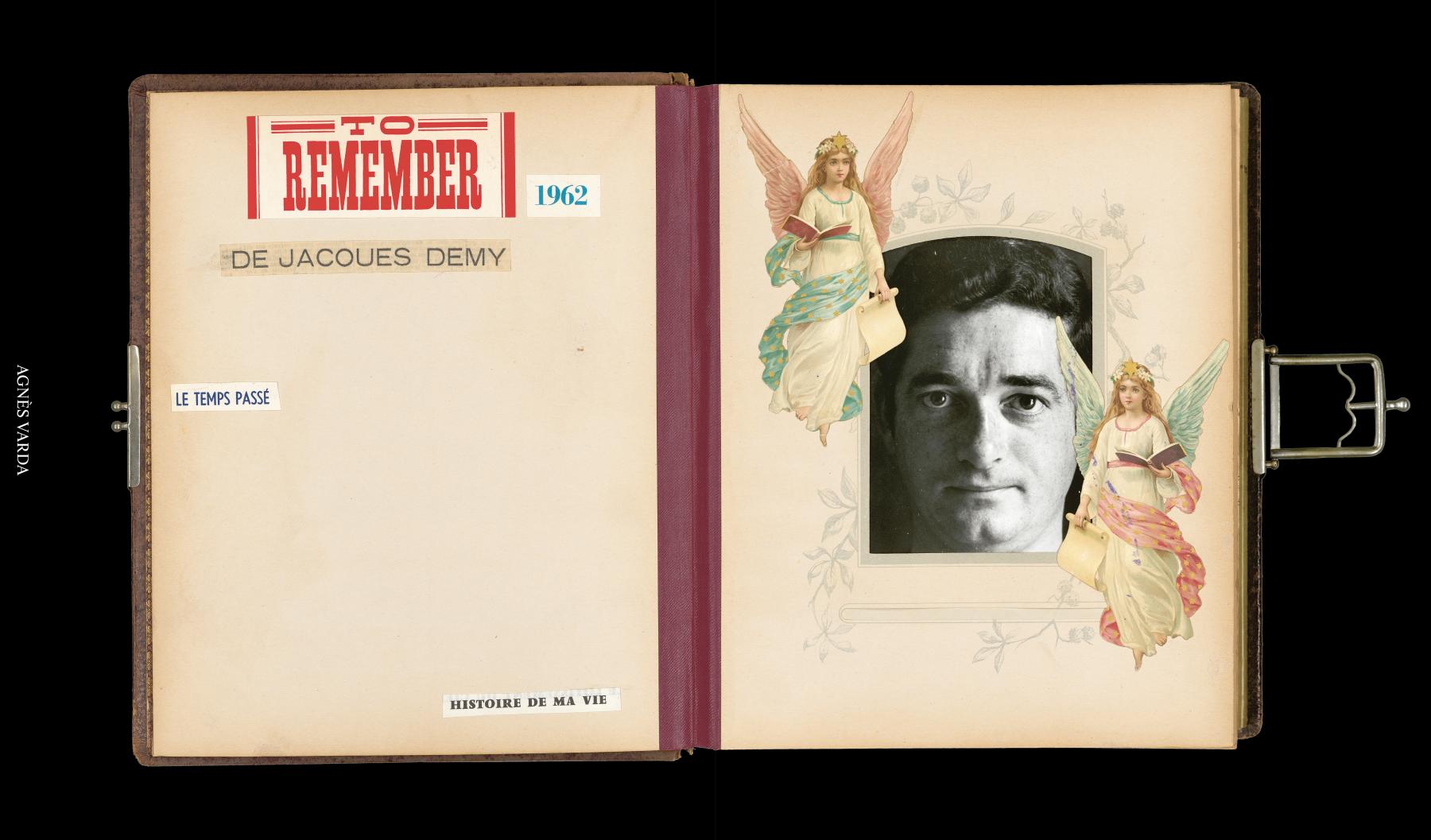
From the Scrapbook of Agnès Varda.
MV: A lot of this takes a hybrid form, where image, text, film and photography come together. You have also referenced the term “autofiction”, where reality is creatively represented. Can you tell us a bit about how all of these converge in the form of the scrapbook?
MO: The scrapbook is a form that is free. The scrapbook is like a mirror, becoming a practice of self-discovery—about intimacy, one's inner life and choices as an artist, as well as politics and history, etc. It presents one’s relationship to the world. However, since it is not a diary, it is not something that is very obviously about feelings or experiences. It is more about visuals—editing images, poetic text and memories together. I like the scrapbook form because there is this paradox between something that is intimate and direct but also sometimes very ambiguous or mysterious.
When you go to an archive to research the work of any artist or even a writer, their work is organised by their projects. You also have private documents, like letters or diaries. Scrapbooks belong to both of these categories. They are connected to a project but are also part of an intimate expression of the self and become part of personal belongings. It is here that the boundaries between fiction and nonfiction, as well as intimacy and reality, are blurred.
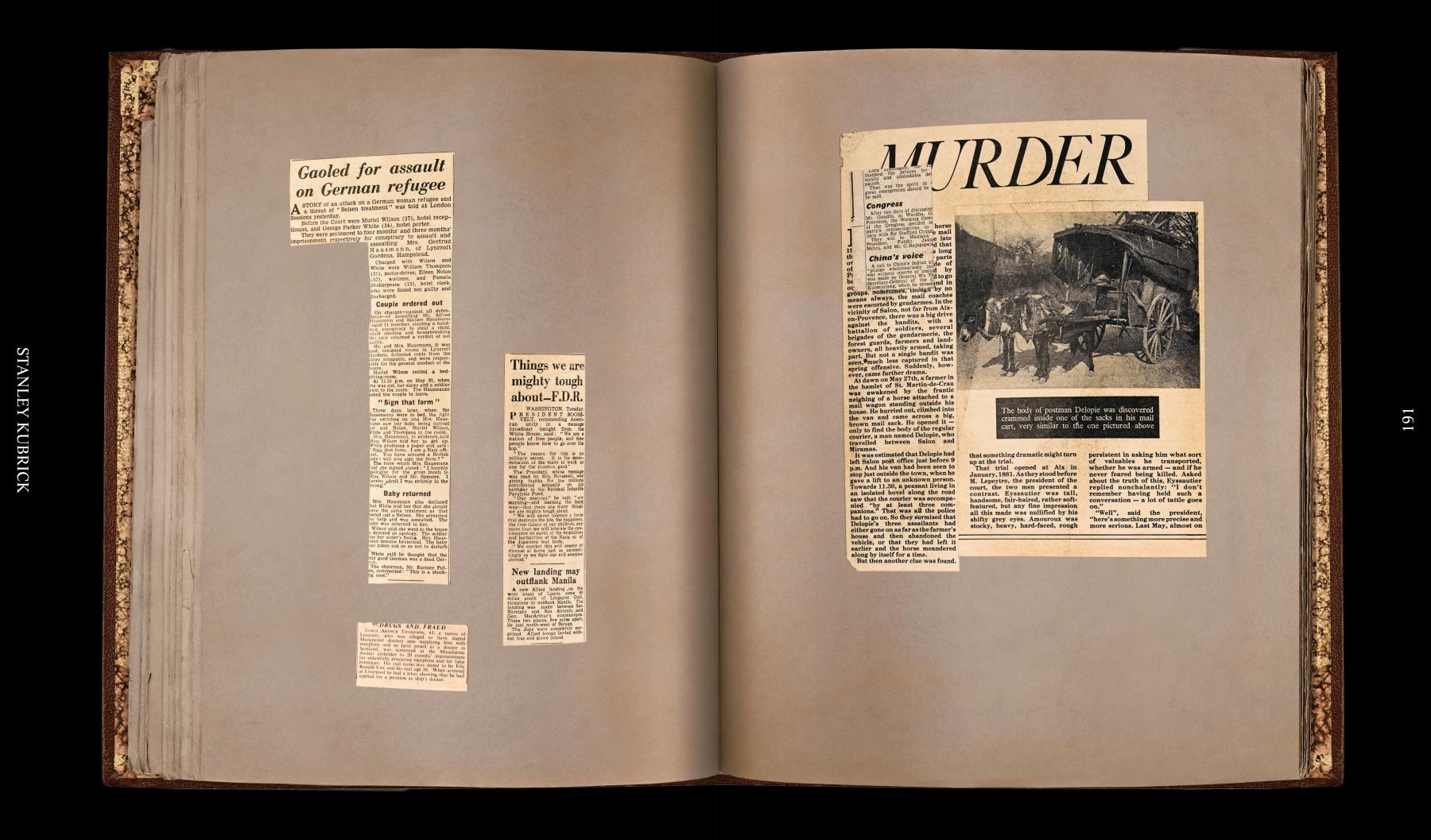
From the Scrapbook of Stanley Kubrick.
Though there are a few exceptions, for instance, I have included Stanley Kubrick’s scrapbook from The Shining (1980). The scrapbook was supposed to be in the frame, as a prop for the character because it is a part of Stephen King’s book. It was ultimately invisible in the film, despite the fact that it was created with a lot of effort and energy. It is not as intimate as the rest of the scrapbooks in the show, but the exhibition offers a very rare opportunity to see what is inside this mysterious object. Of course, most of the scrapbooks in the show are related to film and cinematography. For instance, we have the scrapbook made by Stan Brakhage and his wife, Jane Wodening, which they worked on for ten years. It reveals a lot about their lives in America, poetry and trying to find one’s way in the world. A scrapbook is a very poetic object that is not very easy to put into one category. It belongs to many categories, such is the polysemic nature of the scrapbook.
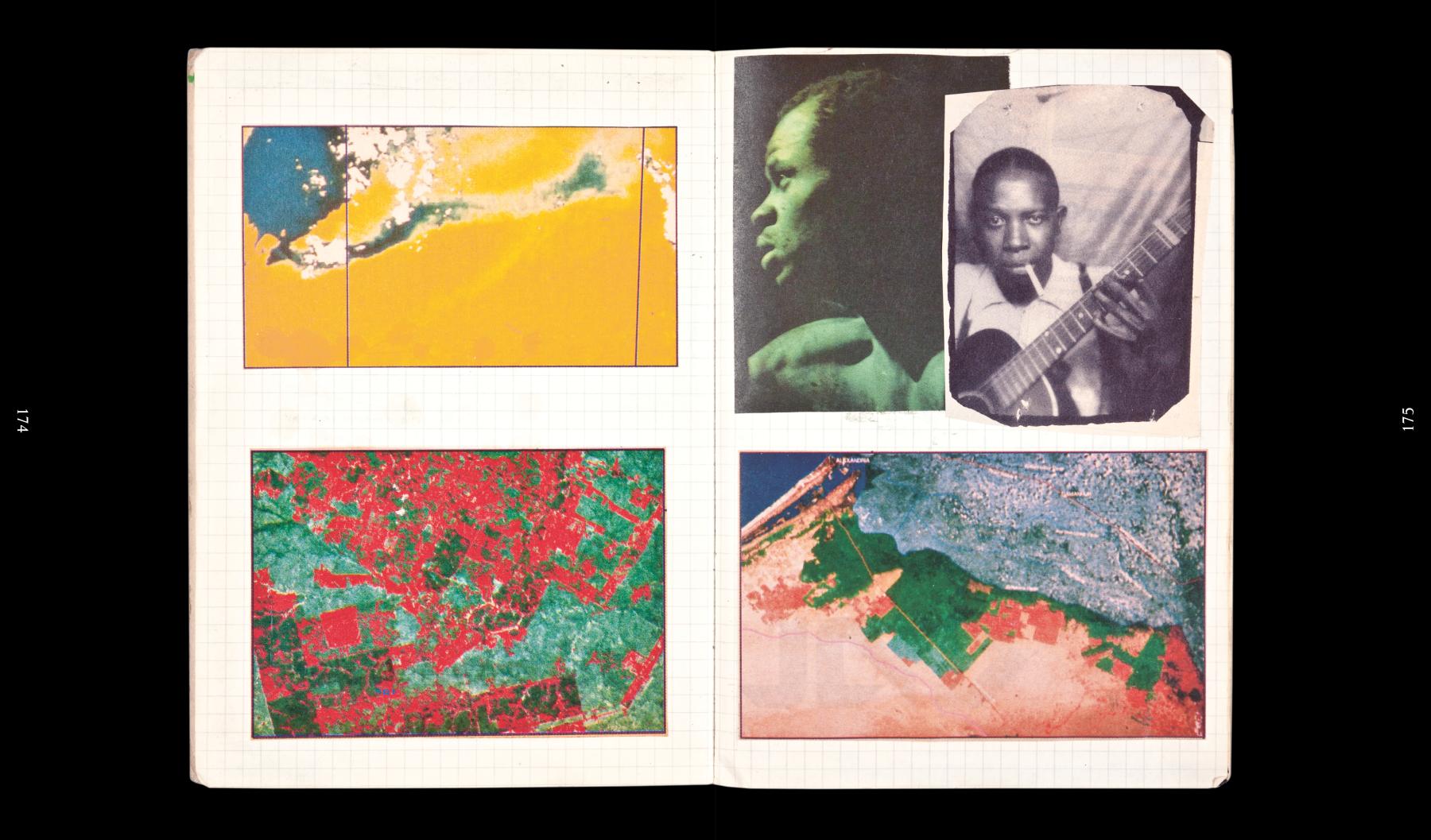
From the Scrapbook of Pedro Costa.
To read more about the 2023 edition of Les Rencontres d’Arles, read Annalisa Mansukhani’s two-part interview with Soumya Sankar Bose, Sukanya Deb's interview with Vishal Kumaraswamy, Sukanya Baskar’s reflection with Riti Sengupta and on Tanvi Mishra’s curatorial vision for the Moving Definitions show.
To read more about practices around scrapbooking, revisit Samira Bose’s reflection on Nilima Sheikh’s practice and exploration of the book Filmi Jagat.
All images courtesy of Delpire & Co / Libella.
All images courtesy of Delpire & Co / Libella.




